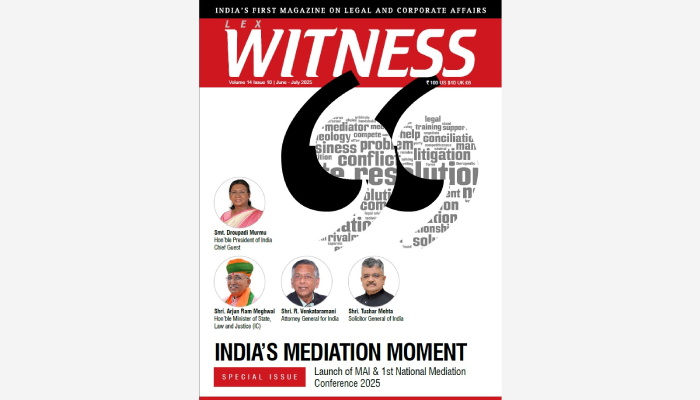
or

As a series article, the first part presents a detailed analysis of crowd-funding as an alternative means of raising finance and discuss the merits and demerits and the global scenario as well as the SEBI regulations, besides the concept, history and the current scenario of crowdfunding in India.
In common parlance, crowdfunding is understood as raising funds from a large number of people, basically the “crowd”. The idea was originated long back without people realising its potential. It has evolved over a substantial period of time and has taken its present shape. In its present form crowdfunding is mainly restricted to approaching the crowd using internet based platforms which have a wider reach. This helps both the investors and borrowers to approach the most appropriate party. With its increasing significance, various countries have enacted legislations for regulating the field of crowdfunding. Some countries have successfully implemented these laws whereas the others are still coping with the risks involved. With the same view in mind, SEBI came up with a consultation paper in order to provide a legal framework for the parties involved. Realizing the situation, the Government of India has tried to amend the existing legal framework along with regularizing the new and upcoming ventures which could help in improving India’s current position.
Collecting money in small proportions from a large number of people for the purpose of charity and social work marks the beginning of the present-day concept of large number of donors for accomplishment of a task has been an established tradition. The term, which itself was coined in the year 2006 by Michael Sullivan in his blog fundavlog which involved a simple funding process for creating an incubator for video blog related projects and events, has transformed from the primitive model of collecting money directly from the people to the present-day model typically requiring the use of internet. He had stated that “Many things are important factors, but funding from the ‘crowd’ is the base of which all else depends on and is built on. So, Crowdfunding is an accurate term to help me explain this core element of fundavlog.”
Crowdfunding as a practice has been predominant since the ancient era. Though it is perceived as a contemporary Internet based phenomenon, in India, the earliest form of crowdfunding could be traced back to the times when finances were raised from the public for the construction of various temples. The institutionalization of crowdfunding can be seen with the advent of Irish Loan Funds started by Jonathan Swift in the 1700s. Irish Loan Funds were started with the intent of providing funds to low-income families who had no credit history but were considered creditworthy. The 20th Century saw various crowdfunding initiatives in numerous fields including music, fashion, movies etc. India’s first crowdfunded project was a movie called Manthan, released in the year 1975. The movie was produced by borrowing ` 2 each from 5 Lakh farmers.
Furthermore, a very significant development took place in the year 1976 when the father of micro finance, Muhammed Yunus, came up with the idea of Grameen Banks, with the intent of providing credit to low-income people. The primary objective behind this was to eliminate exploitation of the poor and create opportunities for their self-employment. This concept of micro financing used innovative models such as support groups and peer to peer lending for funding.
More recently, a British rock band named Marillion raised around $60,000 for a travel trip to the United States of America in the year 1997 via crowdfunding. Crowdfunding platforms gathered momentum in 2003 when Internet’s first fan funding platform, Artist Share was started by Brian Camelio in the United States of America. Later several other crowdfunding sites started emerging. Out of them the most eminent are Kickstarter and IndieGoGo. They support individuals to pool in funds for charity or even startup businesses.
India’s first crowdfunding portal, Pik A Venture was launched in July 2013 by Ruchi Dana, an MBA student at Stanford Graduate School of Business. This was followed by a number of Indian crowdfunding platforms like Wishberry, Catapoolt and Start 51. Further “The National Crowdfunding Association of India” was established in 2014. Its mission is to enhance and encourage the scheme of crowdfunding in the Indian market. Also, India’s first National Crowdfunding Conference was held on 21st March 2015 at the Indian School of Business, Hyderabad so as to increase the general awareness about this fundraising technique. Currently, crowdfunding campaigns in India are estimated to have raised around Rs. five crores, which although a respectable amount, is still less than its global counterparts which is way less than the global situation. Nevertheless, crowdfunding in India has immense potential as a means of raising capital for those entities that cannot avail existing sources of capital.
The general concept of crowdfunding as perceived by a layman means accumulating money in small proportions from the general public for a specific cause. As defined in the SEBI consultation paper, “Crowdfunding is solicitation of funds (small amount) from multiple investors through a web-based platform or social networking site for a specific project, business venture or social cause”. Economists Marco Sahm, Paul Belleflamme, Thomas Lambert, and Armin Schwienbacher Corrigendum defined crowdfunding as “With crowdfunding, an entrepreneur raises external financing from a large audience (the “crowd”), in which each individual provides a very small amount, instead of soliciting a small group of sophisticated investors”.
The working of any crowdfunding model has three requisites, namely:
As per IOSCO Staff Working Paper, crowdfunding has been classified into four categories based on the return received by the investor/ donor:
Crowdfunding for social and charitable cause without getting anything in return.
For example: raising funds for cancer patients or relief funds for disaster struck areas or collecting funds for constructing temples.
Collecting funds against some sort of tangible consideration or reward received by the investor.
For example: Investing in a movie in consideration for the tickets or financing a music album in return for a copy of the album.
The crowdfunding platform plays an active role in matching the borrowers with the lenders along with setting up the interest rates in order to provide unsecured loans.
For example: Milaap, a Singapore based crowdfunding platform, set up in Bangalore deals with peer to peer lending.
Crowdfunding where against the investment made, the investors receive equity shares.
For example: Syndicate Room, a U.K based Crowdfunding platform deals in equity based crowdfunding.
Crowdfunding is an emerging global trend. The success of this business idea can be seen in the increasing number of companies trying to raise money through the various crowdfunding platforms.
In a study conducted by Fundable, “crowdfunding is estimated to add at least 270,000 jobs reaching two million new jobs by 2020 and inject more than $65 billion into the Global economy”. It was estimated that this the crowdfunding industry’s growth grew by 92% by in the year 2014. Furthermore, the period from 2009 to 2014 the industry has seen a growth by of 1000% in the crowdfunding industry. Out of the 4 types of crowdfunding mentioned above, equity-based crowdfunding has seen the maximum growth.
Recently, even India has witnessed several crowdfunding campaigns. Various crowdfunding platforms have started their operations in India including Wishberry and Ignite. India has witnessed a growth rate of 120 % in the year 2013. The total number of projects crowdfunded so far is more than 150 with the amount raised approximating INR 300 lakh crores resulting in an INR 5 crores market a year.
The biggest beneficiary of crowdfunding in India has been the Indian film industry which has seen a new alternative for raising money. The best example of this is the film Lucia, which is one of the most successful crowdfunding ventures. Its total budget was ` 71 lakh out of which around ` 51 lakhs was raised in a mere span of 31 days through various social networking. In fact, the maximum amount crowdfunded for a single project in India is for the film I’AM for which ` 84 lakhs was raised.
However, crowdfunding though accepted as a successful alternative in raising capital, still lags behind the global standards. Recently, The Jumpstart Our Business Startups (JOBS) Act, 2012 was passed in the United States of America. This legislation has given a boost to equity based crowdfunding by removing a ban on general solicitation or general advertising in investment in securities. It has thus legalized equity based crowdfunding in the United States of America.

Lex Witness Bureau

Lex Witness Bureau

Lex Witness Bureau

For over 10 years, since its inception in 2009 as a monthly, Lex Witness has become India’s most credible platform for the legal luminaries to opine, comment and share their views. more...
Connect Us:


The Grand Masters - A Corporate Counsel Legal Best Practices Summit Series
www.grandmasters.in | 8 Years & Counting
The Real Estate & Construction Legal Summit
www.rcls.in | 8 Years & Counting
The Information Technology Legal Summit
www.itlegalsummit.com | 8 Years & Counting
The Banking & Finance Legal Summit
www.bfls.in | 8 Years & Counting
The Media, Advertising and Entertainment Legal Summit
www.maels.in | 8 Years & Counting
The Pharma Legal & Compliance Summit
www.plcs.co.in | 8 Years & Counting
We at Lex Witness strategically assist firms in reaching out to the relevant audience sets through various knowledge sharing initiatives. Here are some more info decks for you to know us better.
Copyright © 2020 Lex Witness - India's 1st Magazine on Legal & Corporate Affairs Rights of Admission Reserved